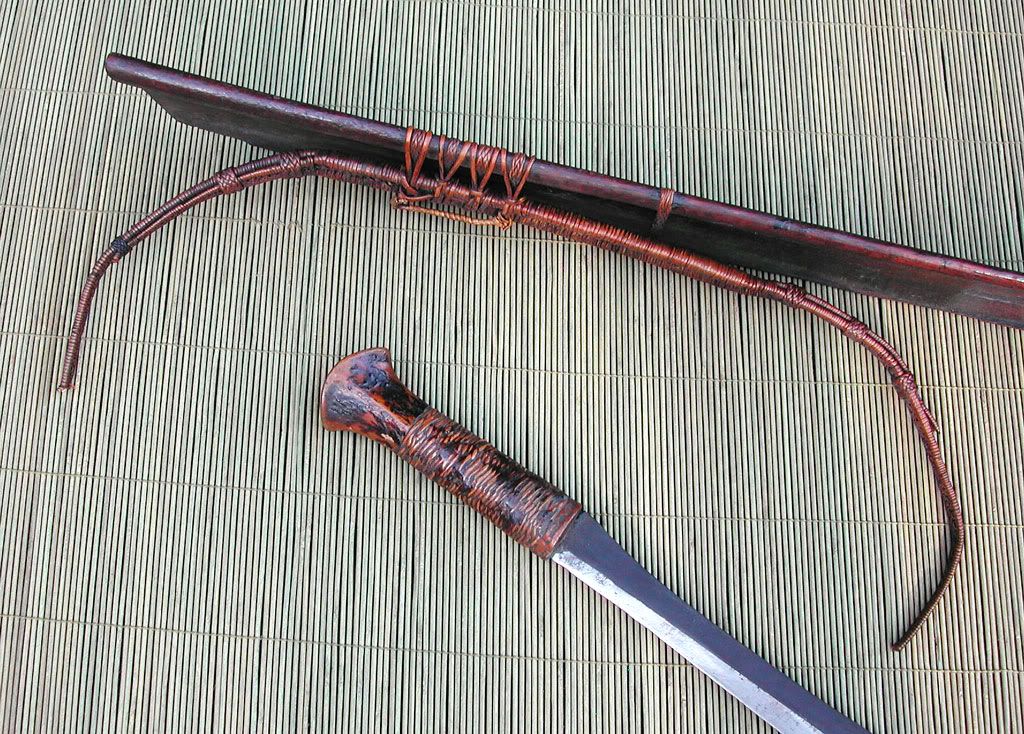
 |
|
|
#1 |
|
Member
Join Date: Dec 2004
Location: Kernersville, NC, USA
Posts: 793
|
I've wanted one of these for a while, especially after reading the book "Naga Path". Finally bid enough on Ebay to get a fair example. Carrying loop broken, but otherwise complete. Supposedly picked up by a soldier in Burma in WWII. (aren't they all?) Handle wrapping covered in pitch. The spine and top half of the blade is coated with paint, or black pitch. Any info appreciated.
Thanks, Steve    
|
|
|

|
| Thread Tools | Search this Thread |
| Display Modes | |
|
|